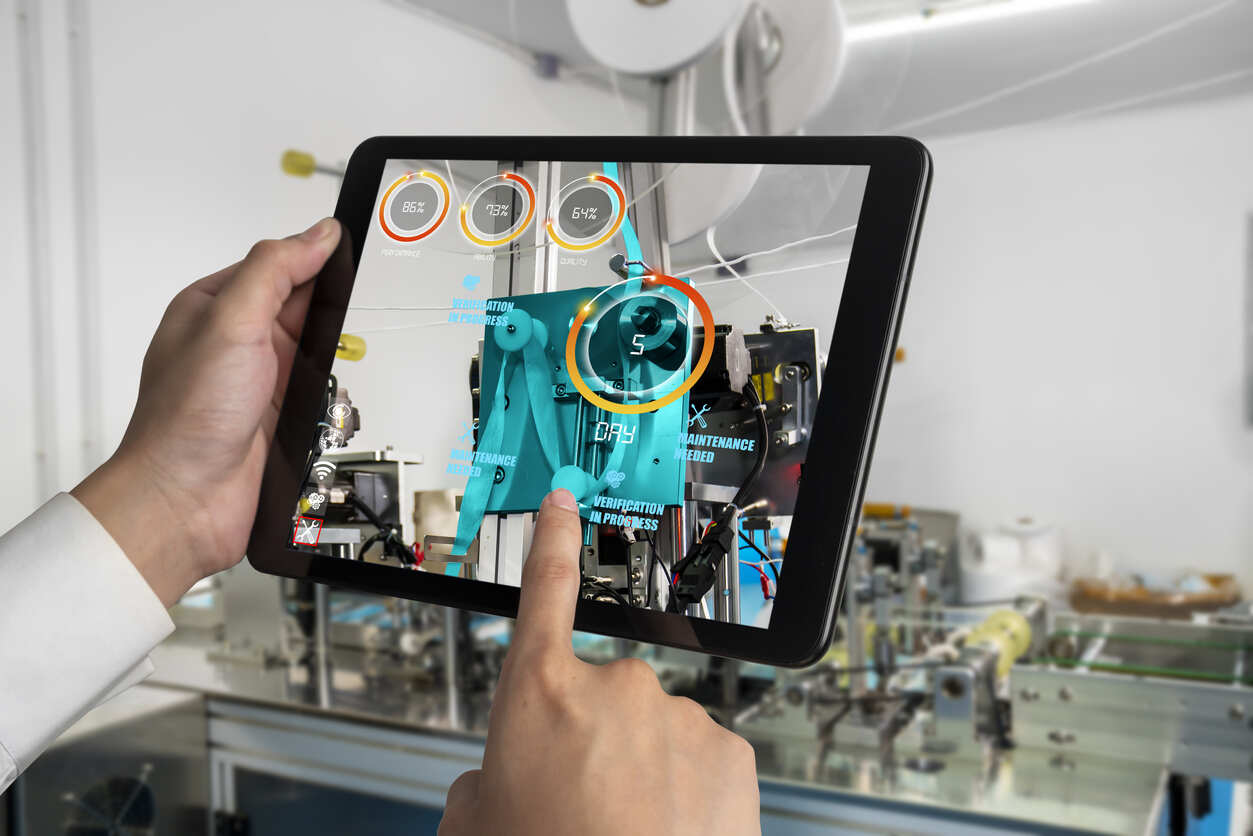Augmented Reality (AR) has transitioned from a futuristic concept to a powerful marketing tool that enhances customer experiences and engagement. By overlaying digital information onto the real world, AR offers brands a unique way to interact with consumers, create memorable experiences, and drive sales. In this blog, we’ll explore how AR is being utilized in marketing, its benefits, and examples of brands that are successfully leveraging this technology.

Table of Contents
Toggle1. Understanding Augmented Reality
Augmented Reality is a technology that superimposes computer-generated images, sounds, or other sensory enhancements onto a user’s view of the real world. Unlike Virtual Reality (VR), which creates an entirely immersive environment, AR enhances the existing environment by adding digital elements. This technology is accessible through smartphones, tablets, and AR glasses, making it widely available for consumers.
2. How AR is Transforming Marketing
AR is changing the marketing landscape by providing interactive and engaging experiences. Here are some of the key ways brands are integrating AR into their marketing strategies:
a. Product Visualization
One of the most significant applications of AR in marketing is product visualization. Brands can allow customers to see how products will look in their environment before making a purchase.
- Example: Furniture retailers like IKEA have implemented AR apps that let customers visualize furniture in their homes. Users can point their smartphones at a room and see how a piece of furniture would look, helping them make informed decisions.
b. Try Before You Buy
AR allows consumers to virtually try on products before purchasing, reducing the uncertainty that often accompanies online shopping.
- Example: Cosmetics brands like L’Oréal and Sephora offer AR features in their apps that enable customers to try on makeup virtually. Users can see how different shades look on their skin without physically applying the products, enhancing their shopping experience.
c. Interactive Advertising
AR can turn traditional advertising into interactive experiences, capturing consumers’ attention more effectively.
- Example: Pepsi launched an AR campaign called “Pepsi Max Unbelievable,” where users could interact with AR ads on bus shelters. When they looked through their phones, they saw unexpected and engaging scenarios, such as a dinosaur or a UFO, creating a buzz around the brand.
d. Enhanced Retail Experiences
In-store AR experiences can elevate the shopping journey by providing additional information and interactive elements.
- Example: Retailers like Lowe’s have implemented AR technology in their stores, allowing customers to use their smartphones to scan products and receive information, installation guides, or DIY project ideas. This enhances the in-store experience and empowers customers with valuable insights.
3. Benefits of Using AR in Marketing
The incorporation of AR in marketing strategies offers several advantages:
- Increased Engagement: AR creates interactive experiences that capture consumer attention and encourage them to engage with the brand. This increased engagement can lead to higher conversion rates.
- Enhanced Customer Experience: By providing tools for visualization and interaction, AR enhances the overall shopping experience. Customers feel more confident in their purchase decisions, leading to greater satisfaction.
- Differentiation from Competitors: Brands that leverage AR technology can stand out in a crowded marketplace. Innovative AR experiences can create memorable brand interactions, fostering customer loyalty.
- Data Insights: AR applications can provide valuable data on consumer behavior and preferences. Brands can analyze how customers interact with AR features, helping them refine their marketing strategies.
4. Challenges of Implementing AR in Marketing
While the potential of AR in marketing is immense, brands may face challenges when integrating this technology:
- Cost of Development: Creating AR experiences can be resource-intensive, requiring investment in technology and skilled developers. Smaller brands may find it challenging to allocate budgets for AR initiatives.
- User Adoption: Although AR technology is increasingly popular, not all consumers may be familiar or comfortable with it. Brands must ensure their AR experiences are user-friendly and accessible.
- Device Compatibility: AR experiences may vary in quality depending on the device used. Brands need to consider the technical specifications of their target audience’s devices to ensure a consistent experience.
5. The Future of AR in Marketing
As technology continues to evolve, the future of AR in marketing looks promising. Here are some trends to watch:
- Advancements in Technology: Improvements in AR technology, such as faster processing speeds and enhanced graphics, will enable brands to create even more immersive experiences.
- Integration with AI: The combination of AR and Artificial Intelligence (AI) can lead to more personalized experiences. Brands could use AI to recommend products based on user preferences, enhancing the AR shopping experience.
- Broader Applications: As AR technology becomes more mainstream, brands across various industries—such as travel, education, and real estate—will likely adopt AR marketing strategies to engage their audiences.
Conclusion
Augmented Reality is revolutionizing marketing by offering brands innovative ways to connect with consumers and enhance their shopping experiences. From product visualization to interactive advertising, AR has the potential to transform how consumers interact with products and brands. As technology advances and consumer expectations evolve, embracing AR in marketing strategies will become increasingly essential for brands looking to stay competitive in a digital-first world. By leveraging the power of AR, brands can create memorable experiences, build customer loyalty, and ultimately drive sales in the ever-evolving landscape of marketing.


No responses yet